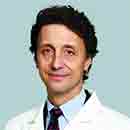Ask the Pediatrician: Anaphylaxis in infants and children: Responding to severe allergic reactions
Published in Health & Fitness
Anaphylaxis is a rapid and severe allergic reaction. It is also a life-threatening emergency.
A rising number of children are being treated in emergency departments for anaphylaxis in recent years. At any age, anaphylaxis can be deadly without immediate medical help.
Allergic reactions are unpredictable in terms of when they happen, what types of symptoms develop, and the severity of those symptoms. They can happen to children at any age, including infants. Being prepared and knowing the signs of an allergic reaction can save a child's life.
Anaphylaxis includes a wide range of symptoms that can start quickly—within minutes or several hours after exposure to an allergy trigger.
Be aware of any of the following symptoms, especially if they appear suddenly:
shortness of breath, wheezing, coughing or tightness in chest
trouble breathing or swallowing
skin changes like rash, redness or hives and/or pale or bluish color
swelling of the lips or tongue
sneezing, stuffy nose, runny nose
tight throat, difficulty swallowing, hoarseness
weak pulse, symptoms of shock
vomiting, diarrhea (if severe or combined with other symptoms)
dizziness or fainting
feeling of "doom," confusion, drowsiness or agitation
Infants may also experience other symptoms such as irritability, fussiness, or inconsolable crying; sudden drooling; or unusual sleepiness
Epinephrine is the recommended emergency treatment for symptoms of anaphylaxis.
Epinephrine helps quickly reverse the life-threatening symptoms of anaphylaxis.
If it is available, epinephrine should be given immediately to anyone experiencing symptoms of anaphylaxis, followed by a call to 911 and a trip to the emergency department.
Epinephrine comes in auto-injector syringes and nasal sprays to treat anaphylaxis. Parents should speak to their pediatrician to learn how to use their epinephrine device, because the technique is different for different autoinjectors and nasal sprays.
Auto-injectors: For auto-injectors, the best place to inject it is in the muscles of the outer part of the thigh.
Nasal sprays: Epinephrine nasal sprays to treat anaphylaxis are now approved for children weighing 66 pounds or more.
Epinephrine should be prescribed for anyone who has ever had an anaphylactic attack and for infants and children at high risk for anaphylaxis. Because a second dose may be needed if symptoms don't ease quickly, children at risk for anaphylaxis should carry at least two doses of epinephrine with them at all times.
Children who are old enough can be taught how to give themselves epinephrine, if needed. Epinephrine should be readily available in school or child care settings and trained staff should be available to act quickly in case of a reaction. Keep in mind, schools may require detailed instructions from your child's doctor about how and when to use it.
What to do after giving an infant or child epinephrine:
Note what time the epinephrine was given and call 911. Ask for an ambulance with epinephrine. Tell rescue squad when epinephrine was last given when they arrive.
Stay with child and give a second dose of epinephrine if symptoms get worse, continue, or do not get better in 5 minutes.
Keep child lying on his or her back. If the child vomits or has trouble breathing, keep the child lying on his or her side.
Give other prescription medicine (such as the child's inhaler/bronchodilator or an antihistamine prescribed by the doctor), but never use other medicine in place of epinephrine.
Be prepared: have an allergy and anaphylaxis emergency care plan
Anyone caring for an infant or child with a life-threatening allergy must be able to recognize anaphylaxis and know when and how to give the lifesaving treatment (epinephrine).
If your child is at high risk for allergies, or has had a previous severe allergy reaction, the American Academy of Pediatrics recommends you have an Allergy and Anaphylaxis Emergency Plan. Your pediatrician can help you and your family use this plan with anyone who cares for your child. It's also clearly written and easy to understand.
____
Julie Wang, MD, FAAP, FAAAAI, is a Professor of Pediatrics in the Division of Allergy and Immunology at the Icahn School of Medicine at Mount Sinai in New York and a clinician and clinical researcher in the Jaffe Food Allergy Institute. Dr. Wang is past Chair of the American Academy of Pediatrics Section on Allergy & Immunology.
©2024 Tribune Content Agency, LLC.










Comments